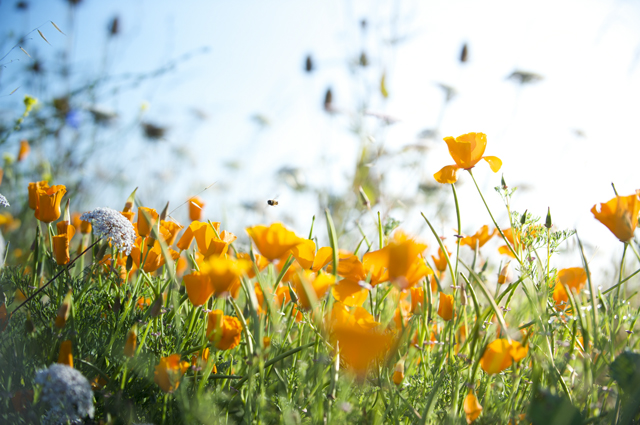
The phenomenon is called Colony Collapse Disorder and researchers still aren’t sure how to stop it–and other factors like mites, climate change and urbanization–from devastating the world’s honeybee population, which has experienced a 50 percent drop in the past half century.
At Humboldt State, lecturer Brian Gross is looking for answers. Gross, who joined the Economics Department this fall, is one of a handful of experts working on the Bee Informed Partnership, a national study of honeybees and beekeeping sustainability funded through the U.S. Department of Agriculture. Over the next five years, Gross and a team of economists, entomologists, epidemiologists and agriculture experts will try to explain the decline.

“What we’re trying to do is understand the beekeeping world, the industry, the disease and what’s going on here,” Gross says.
It’s important work because of the critical role that honeybees play in the global food chain. According to the U.S. Department of Agriculture, about $15 billion in U.S. crops-like apples, cranberries, melons and broccoli-benefit from honeybee pollination.
California-grown almonds-which make up about 80 percent of the world’s supply–depend entirely on honeybee pollination. The billion-dollar a year industry brings bees from around the country to California’s Central Valley each spring, where they pollinate nearly 800,000 acres of almond orchards between Bakersfield and Red Bluff.
“If you drive along Highway 5, you’ll see these densely planted almond trees in full bloom – a curtain of white,” Gross says. “And then right next to them, you’ll see these stacks of beehives, just sitting on the highway.”
It has become a lucrative industry in recent years for beekeepers, but it has also increased the risk for disease, which may be contributing to overall honeybee losses, Gross says. To get some answers, Gross will examine all of the possible factors. This spring, The Bee Informed Partnership conducted a census of U.S. beekeepers and next year, they will survey beekeepers on issues like disease, colony mortality, pest control, labor costs and management decisions. The goal, he says, is to identify a set of best practices to reduce losses and inform beekeepers.
“You have an industry that’s really important for food production-a third of every bite we eat is pollinated by honeybees-and the fact of the matter is we don’t know a whole lot about it or how it works,” Gross says. “Moving forward, what type of policies do we need to implement to make sure we have a resilient, sustaining honeybee population and beekeepers managing it?”